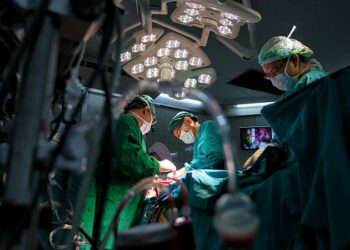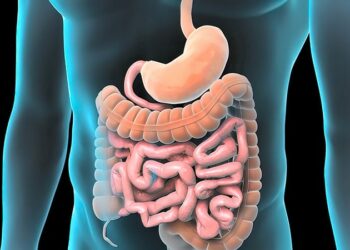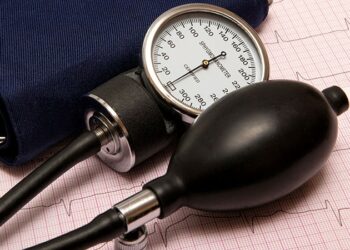The HIV reservoir in breast milk was reassuringly limited in a preliminary study on two individuals with long-term, sustained viral suppression.
No HIV RNA copies were detected in breast milk fluid from two women living with HIV (WLWH), one an exceptional elite controller (EEC) with 9 years of spontaneous viral control and the other on antiretroviral treatment (ART) with undetectable viral loads for years, reported Natalia Laufer, MD, PhD, an infectious disease researcher at the University of Buenos Aires in Argentina, and colleagues.
Very low levels of cellular HIV DNA were detected in these women (0.08 and 0.74 HIV DNA copies per million cells, respectively). Additionally, the EEC showed no HIV provirus while the ART patient showed just 4 defective HIV copies in 11 million cells, Laufer and colleagues wrote in the Annals of Internal Medicine.
“The most significant finding is the extremely low levels of cellular HIV DNA in both women and the absence of intact HIV in the breast milk of the elite controller,” Laufer told MedPage Today.
She told MedPage Today that this study is “the first detailed description of the HIV reservoir in breast milk cells, contributing new insights into how HIV behaves during lactation,” and joins the body of research trying to understand the “optimal virological scenario” for WLWH who wish to chest/breastfeed.
For many years, high-income nations have discouraged WLWH from breastfeeding in order to prevent any HIV transmission risk at all. But these guidelines are evolving, in part motivated by WLWH who wish to breastfeed and the recent mantra that “Undetectable = Untransmittable.” Earlier this year, the American Academy of Pediatrics okayed breastfeeding for some WLWH on ART.
For WLWH not on ART, HIV transmission through breast milk can be as high as 16 to 20%, most commonly in areas where formula and safe water can be limited, according to an accompanying editorial by Lynne Mofenson, MD, of the Elizabeth Glaser Pediatric AIDS Foundation in Washington, D.C., and William Short, MD, MPH, of the University of Pennsylvania Perelman School of Medicine in Philadelphia.
The editorialists cautioned that while research has proven that sexual transmission does not occur in people living with HIV who have reached and sustained an undetectable viral load, the risk for breast milk transmission for this same group is low — but not nonexistent.
Laufer acknowledged that the principle of “Undetectable = Untransmittable” isn’t fully applicable to breastfeeding, but suggested that the present findings are promising and “support the idea that with close monitoring and adherence to ART, the risk of HIV transmission through chest/breastfeeding is extremely low, which could influence future guidelines,” adding that “this is crucial in contexts where formula feeding may not be practical or safe.”
Ultimately, authors concluded that “this preliminary study shows that evaluating the HIV landscape in breast milk is feasible and lays the groundwork for future studies evaluating paired blood or breast milk samples from a larger number of WLWH with long-term viral suppression who are receiving new-generation ART.”
Mofenson and Short said the study’s findings support shared-decision making between people with undetectable HIV viral loads on ART and their healthcare team.
In fact, the study was inspired by one patient who wanted to breastfeed despite having HIV, Laufer said. That woman, referred to as the “Esperanza patient,” was the EEC who had 9 years of spontaneous viral control. She did not breastfeed but for 7 weeks voluntarily extracted her breast milk for the research.
The second participant, the WLWH receiving ART, was on abacavir-lamivudine-dolutegravir and had an undetectable viral load for more than 5 years. This woman breastfed for 12 months without transmitting HIV to her child.
Finally, an HIV-negative woman served as control for the study.
From breast milk, HIV viral loads were assessed via centrifugation with a limit of quantification less than 40 HIV RNA copies/mL. HIV DNA was measured with a polymerase chain reaction (PCR) test as well as a full-length individual proviral sequencing (FLIPS) assay.
The study was limited by its small sample size — just two WLWH — and had limited follow-up. Additionally, it wasn’t designed to evaluate HIV transmission risk, the investigators acknowledged.
In terms of future research, Laufer said the team will focus on studying larger cohorts of WLWH and examining how different ART regimens and varying durations of viral load suppression affect HIV reservoirs in breast milk to inform breastfeeding guidelines.
Primary Source
Annals of Internal Medicine
Source Reference: Osegueda A, et al “HIV reservoir landscape in breast milk from long-term virally suppressed individuals” Ann Intern Med 2024; DOI: 10.7326/ANNALS-24-00085.
Secondary Source
Annals of Internal Medicine
Source Reference: Mofenson LM, Short WR “Breastfeeding, antiretroviral therapy, HIV transmission, and the HIV reservoir” Ann Intern Med 2024; DOI: 10.7326/ANNALS-24-02186.
Source link : https://www.medpagetoday.com/hivaids/hivaids/112290
Author :
Publish date : 2024-10-07 21:00:00
Copyright for syndicated content belongs to the linked Source.


![author['full_name']](https://www.newshealth.biz/wp-content/uploads/2024/10/Can-Women-Living-With-HIV-Safely-Breastfeed.jpg)












